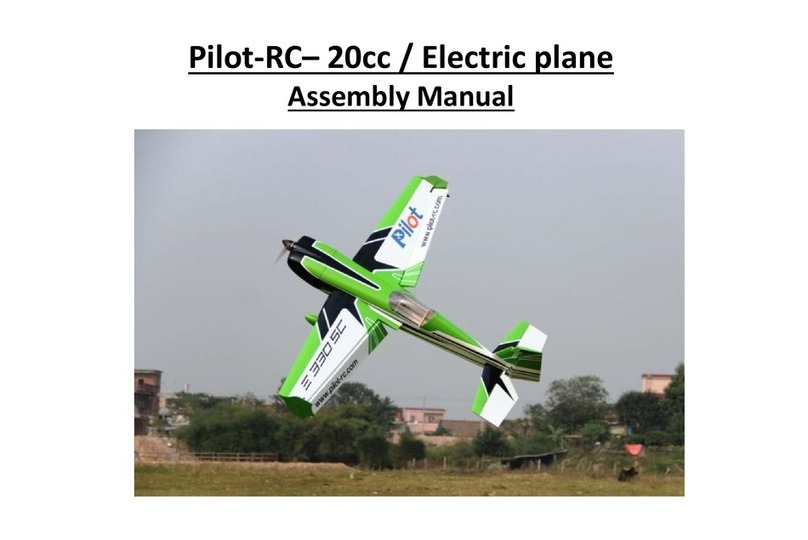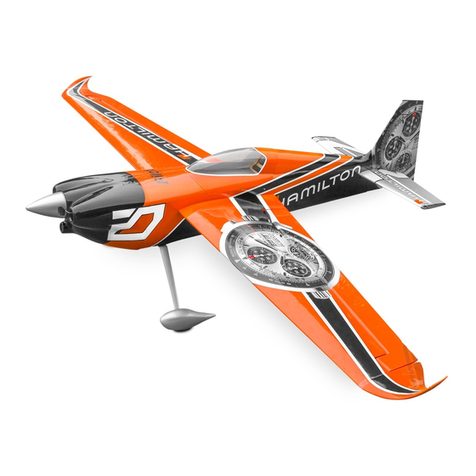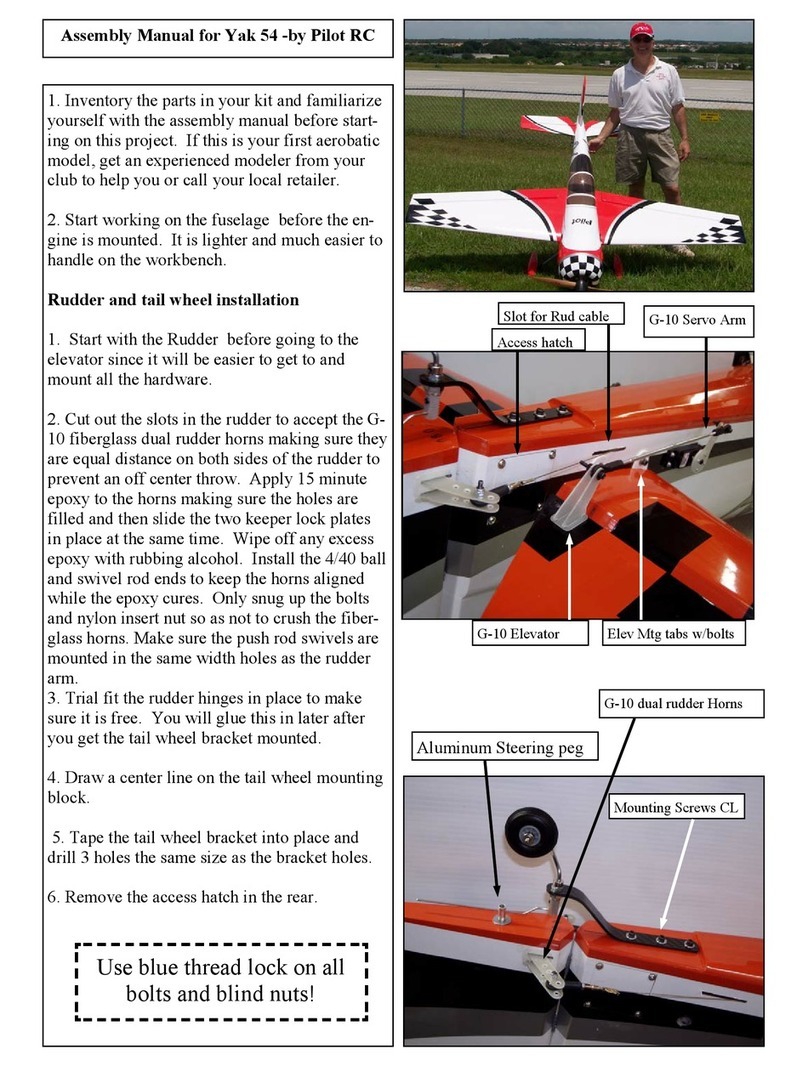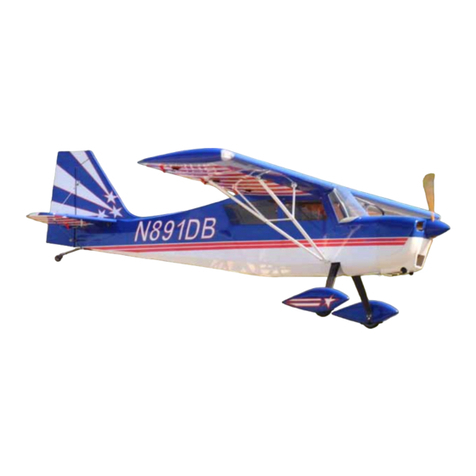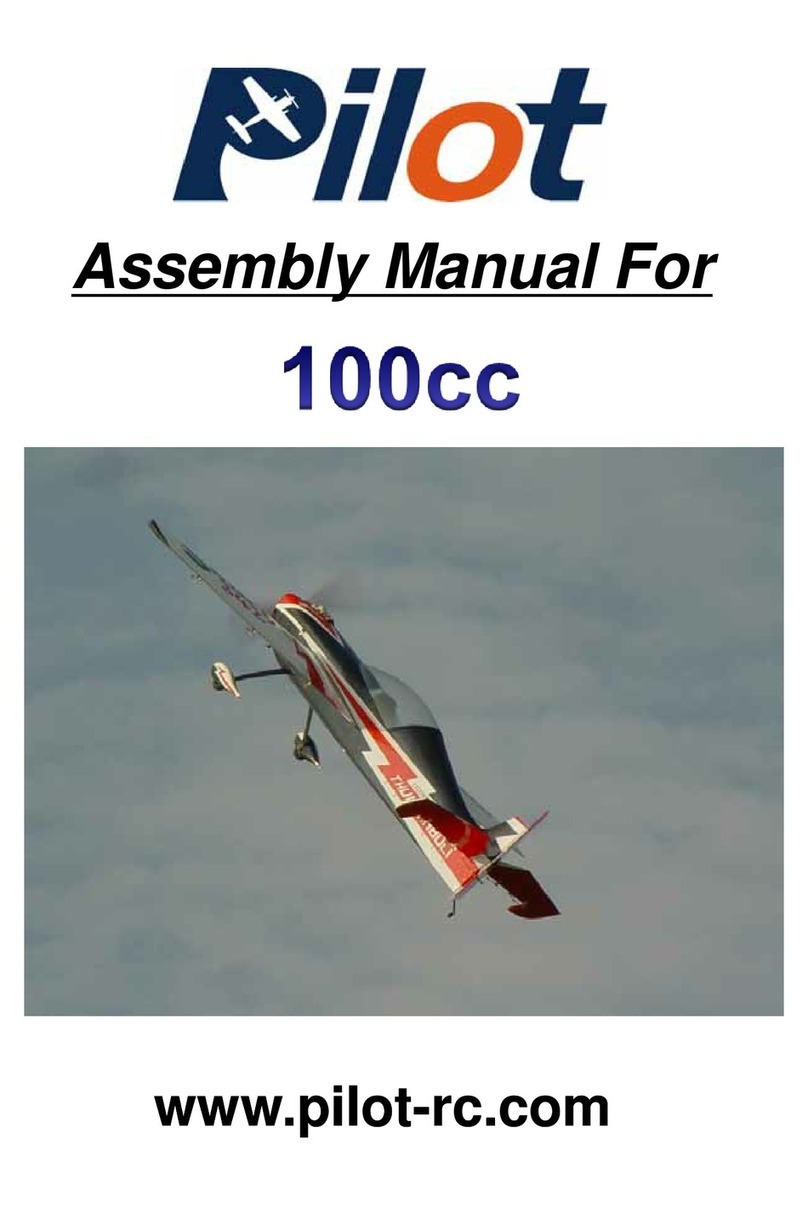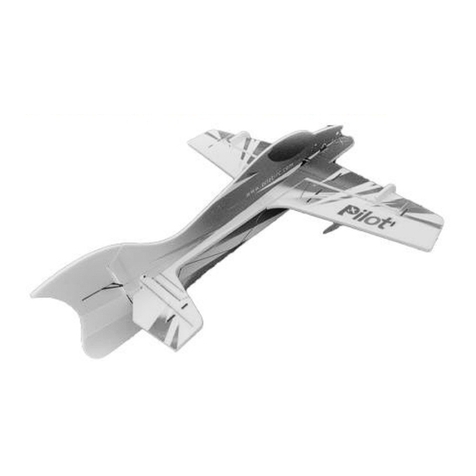•Epoxy Adhesives
•Cyanocrylate adhesives
•X-Acto and Saw knives
•Sandpaper
•Thread lock
•Aircraft stand or support
•Drill, screw drivers, allen keys, wrench set, pliers, etc
2- DISCLAIMER
All Pilot-RC products are guaranteed against defects for 30 days of your receiving
the model. This warranty is limited to construction or production defects in both
material and workmanship, and does not cover any parts damaged due to misuse or
modification.
Should you wish to return this airplane for any reason, all shipping costs are the
responsibility of customer.
If any parts are needed to be replaced by the manufacturer, the original parts must
be returned, at the costumers expense.
Do not regard this plane as a toy! This plane is meant for ages 14 and above.
The manufacturer can not supervise the assembly and maintenance of the model or
ensure your correct radio installation. Therefore, the manufacturer can not be made
responsible or liable for any damage occurring during the use of this radio controlled
model. As such all responsibility for the correct build, maintantence and operation
must be accepted by the customer. The operation of the model is taken as
acceptance by the customer of their acceptance to the above.
The model is highly prefabricated and ready for use, however please also assure
that any pre-installed (such as pushrodand ball link sets, fuel tank, etc) components
are tight, secure and airworthy both for the first flight and subsequent flights as part
of your routine maintenence and verification.
In no event does Pilot-RC accept any liability to exceed the original cost of the basic
Pilot-Rc airframe provided (accesories such as engine or radio system are also
excluded from liability).
To ensure safety, please read the instruction manual thoroughly before assembly.
Building and operating model planes requires diligent practice and correct guidance.
Any neglect, carelessness or lack of experience can cause serious bodily harm or
damage to property.
